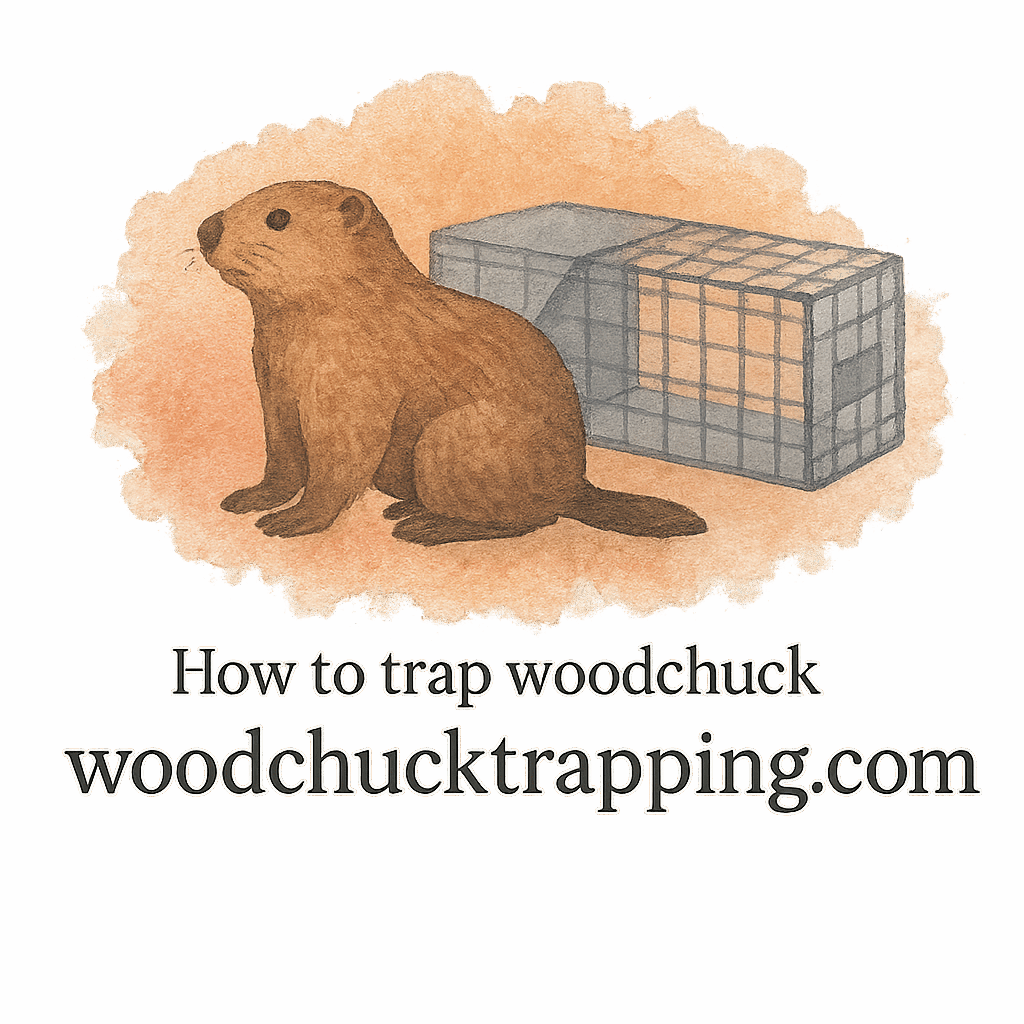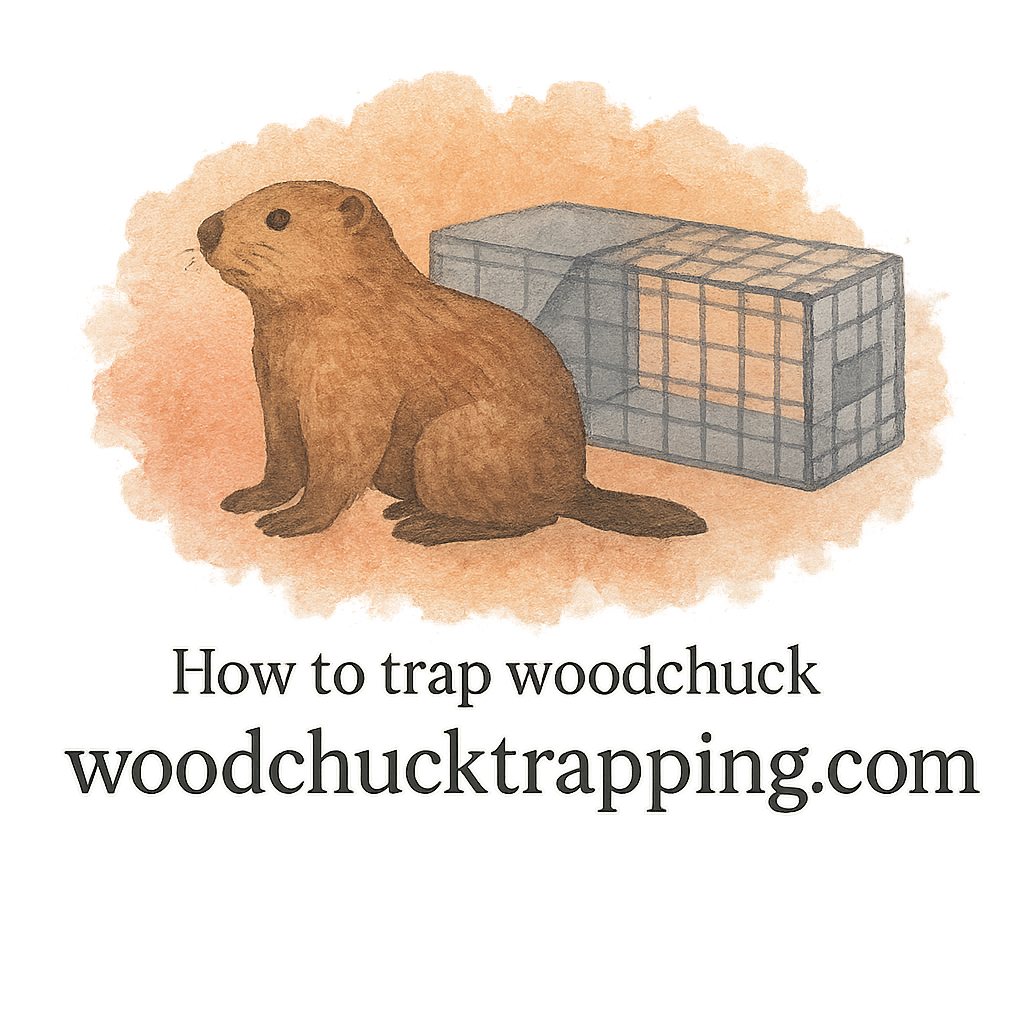Got a woodchuck turning your yard into a minefield of burrows? While it might be tempting to go full-on pest control mode, there’s a better way — one that respects wildlife and keeps your conscience clean. Here’s your complete guide to handling these burrowing buddies the ethical way.
Understanding the Ethical Approach to Woodchuck Control
Why Ethics Matter in Wildlife Management
Every critter, even the garden-wrecking woodchuck, plays a role in our ecosystem. Ethical control methods aim to minimize harm, respect animal life, and comply with local regulations. It’s not about letting them run wild — it’s about humane, responsible action.
Common Myths About Woodchuck Trapping
Think all traps are cruel or that relocation is always the kindest option? Think again. Myths often lead to ineffective or harmful decisions. Real ethical control is a mix of science, law, and compassion.
1. Know the Laws and Local Regulations
Why You Must Check Local Trapping Laws
Before you even pick up a trap, check your state or local wildlife laws. Many regions require permits or restrict certain types of traps.
Check out the complete legal guidelines at Woodchuck Trapping Laws & Safety.
Where to Find Legal Guidelines
Your local wildlife agency or fish and game department is a great place to start. Also, refer to trusted resources like woodchucktrapping.com for up-to-date safety info.
2. Identify the Problem Humanely
Recognizing Signs of Woodchuck Infestation
Look for telltale signs like fresh dirt mounds, gnawed garden veggies, and tunnels near structures. A great resource to dive deeper: Signs of Woodchuck Infestation.
Confirming Active Burrows
Stuff a soft item like newspaper into a suspected burrow entrance. If it’s pushed out overnight, you’ve got an active tenant.
3. Choose Humane Trapping Techniques
Live Traps vs. Lethal Methods
Hands down, live traps are the most humane option. Avoid poisons and snares—they’re not only cruel, but often illegal.
Browse a range of ethical equipment in the Trapping Equipment Reviews section.

Ethical Placement of Traps
Set traps along frequently traveled paths, near burrow entrances, and always on flat ground.
Trap Size, Scent, and Location Tips
Use traps at least 32″ long. Avoid human scent by wearing gloves—see more tips under Handling Gear and Trap Scent.
Explore detailed techniques in Trapping Techniques.
4. Use Non-Toxic, Natural Lures and Baits
Best Ethical Baiting Practices
Don’t use toxic bait that might harm other wildlife. Stick to natural foods like apples, carrots, and cantaloupe.
Recommended Bait Types
Ethical favorites include sweet corn, cantaloupe, and lettuce. Visit Baiting & Luring Guide for expert insights.
Check related tags: Lure, Scent Bait, and Attract.
5. Handle Trapped Woodchucks With Care
Proper Safety Gear and Handling Tools
Always wear gloves and long sleeves. Use a trap cover to reduce stress and shield the animal from weather.
Visit Handling Tips for more do’s and don’ts.
Avoiding Stress and Injury
Keep the trap calm and covered. Don’t shake or tilt it. Speak softly and move slowly to minimize panic.
6. Relocate Only When Legally Permitted
Understanding Relocation Laws
In many areas, it’s illegal to relocate wildlife due to disease risk and survival issues. Always check first!
Choosing Suitable Release Sites
If allowed, choose a wooded area far from homes and roads, with a nearby water source.
For safe transport tips, check Trapped Animal advice.
7. Prevent Recurrence Through Yard Modifications
Blocking Off Entry Points
Fill old burrows with gravel, install one-way exclusion doors, and monitor hotspots.
Installing Fencing and Barriers
Use mesh fencing buried at least 12” underground and angled outward. Perfect for those dealing with a Small Yard or limited space.
See more under Prevention & Damage Control.
8. Avoid Trapping During Breeding Season
Importance of Timing in Ethical Control
Springtime is when mama woodchucks have babies. Trapping during this period can orphan young, which is both cruel and avoidable.
Follow humane practices outlined in Humane Trapping.
9. Monitor and Maintain Your Traps Regularly
Checking Traps Frequently
Once a trap is set, check it every few hours—definitely no less than every 12. Never leave an animal trapped overnight.
Adjusting Placement As Needed
If your trap’s not catching anything after a few days, reposition it. Try placing it near fresh burrow activity.
Explore repositioning strategies in How to Trap.
10. Educate Yourself and Spread Awareness
Learning From Experts and Resources
Don’t wing it—read up, take a course, or talk to local wildlife experts. Dive into Trapping Essentials and Techniques.
Teaching Others About Humane Practices
Whether it’s your neighbor or your local community Facebook group, spread the word about ethical trapping. You’ll be surprised how many are willing to listen.
Conclusion
Woodchuck control doesn’t have to be a heart-wrenching affair. With these 10 best practices, you can keep your yard safe and your moral compass intact. From using the right trap gear to being mindful of infestation signs, every step matters. Take the ethical path—you’ll sleep better, and so will the woodchucks (well, eventually… in a new home).
FAQs
1. What’s the most humane way to get rid of a woodchuck?
Live trapping and relocating (where legal) is the most humane. Always check local laws first.
2. Can I trap a woodchuck in the winter?
Usually, no. Woodchucks hibernate in winter and trapping them isn’t effective or necessary.
3. Is it legal to kill a woodchuck in my yard?
It depends on your state. Many areas restrict lethal control methods—check Laws & Safety.
4. What bait attracts woodchucks the most?
Cantaloupe and sweet corn are top choices. Learn more from the Baiting Guide.
5. Do I need gloves when handling a trap?
Yes! Gloves prevent the transfer of human scent and protect you from bites or scratches.
6. How far should I relocate a trapped woodchuck?
If legal, aim for 5–10 miles away in a safe, wooded area with water access.
7. What if I catch a non-target animal?
Release it immediately and reset your trap with different bait or in a new location.


